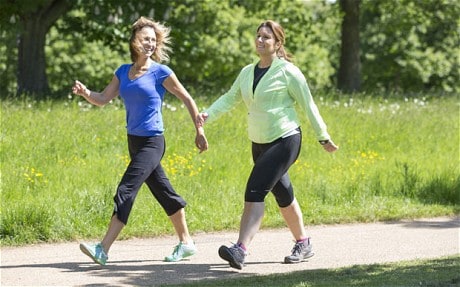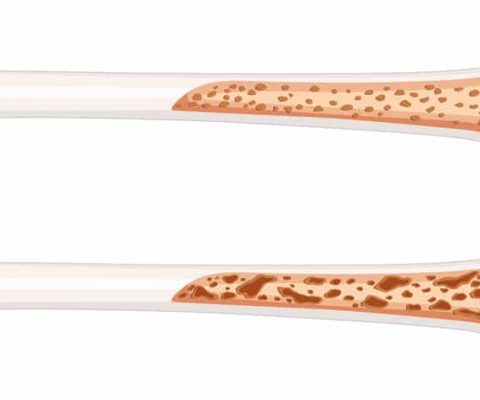How Many Calories Do You Burn While Walking?
Disclosure: We use affiliate links and may receive a small commission on purchases.
 How Many Calories Do You Burn While Walking?
thefitbay.com
How Many Calories Do You Burn While Walking?
thefitbay.com
In a growing era of “runners” who are taking the streets by storm, making it a new and fun way to burn calories, there are still those that prefer the good old ways of walking.
The traditional way of burning calories, walking, ensures that your heart stays strong by lowering your blood pressure and ensuring there’s less pressure on this vital organ. A nice brisk walk also ensures that you get a good night’s sleep which overall has a positive outlook on your health and well-being. Interestingly enough, walking also helps reduce fat that covers the belly and increase the production of good cholesterol (HDL). Lastly, many sources indicate that walking is just as good and as effective as running.
When it comes down to the question, how many calories does one burn when walking, there are many factors that come into play. For starters, what kind of walking are you doing? Some of the commonly practiced ways of walking are:
Non-strenuous walking or what you might refer to as a “casual” walk. An average person indulges in non-strenuous walking, like walking your dog at the end or beginning of the day could easily burn you 70-90 calories per half an hour or about 150 calories in an hour. Just by that activity alone, you’re easily burning 1050 calories in a week if you walk your dog every day! Plus that’s not even counting the walking you do around the mall or the calories you burn when you eat healthy.

Strenuous walking or what many people refer to as “brisk walking”. Walking fast with controlled breathing for an extended duration is called brisk walking. On some days I indulge in this form of walking when I make it down all the way to the parking lot and realize I forgot my car keys! Anyway, if one walks briskly at about 3.4 mph or walks at a steady pace going uphill, you can easily burn 9- calories in half an hour or about 180 calories in an hour. Varying on weight restrictions, a person who weighs about 200 lbs at 3.5mph burns about 240 calories per hour. That’s a significant number considering those that do strenuous walking usually indulge in distance walking like race-walking or hiking which covers a prominent distance resulting in much more calories being burnt! According to Harvard health, a person weighing in about 120 pounds who walks briskly can burn about 150 calories in 13min/mi which is a great estimate.
Treadmill walking: This is a great way of incorporating walking into your routine and not have to face the hassle of going out and walking. A good walking regimen with alternating phases of speed walking and recovery intervals, one can easily develop a routine of about 30 minutes of walking to help burn calories. Interestingly, this type of walking is a mix of non-strenuous and strenuous walking which gives a good overall calorie burn.
High-calorie-burn walks: These types of walks not only increase your calorie burn by five times but also provide a great experience. Great for the weekends, walking for more than 60 minutes ensures you burn more calories plus it prepares you for long distance running, if that is your thing.
Walk + workout: This is often seen in many ways. Some of the commonly seen methods of practicing workouts while you walk consist of “the belly-bust” where you contract and hold your abs as you walk, without holding your breath. This way you give your abs a good workout while you walk. Another way of incorporating a workout into your walk is by alternating your walking direction. This routine is best done if you walk on a track of sorts, like they have at schools.
Research shows that changing directions between walking laps keeps your mind alert and also pumps up the calorie burn while working your muscles. Some ways of doing this consist of your regular forward walk, then alternate by “side-shuffling” where you turn to the side with your right foot in front of you and move to the side. You can move onto the next lap (if you walk for that long) by walking backwards. Whichever direction you go in, walking will keep your find alert and help burn more calories.

But, despite all that information, the question remains, just how much calories are you burning as you walk? As mentioned above, the way you walk definitely matters. It is taken into account to really consider how much you are burning. That being said, the distance you walk is a significant attribute in calculating the calories that you burn. The mileage, in conjunction with your weight and how briskly or slowly you walk (speed) determine the overall calorie loss. Some sources also suggest that your sex has a lot to do with how many calories you burn since men have more muscle mass, they burn more but more research must be done to determine if this applies when walking as well.
Lastly, there are apps that you can download which help keep track of your distance as well as your weight as you go on this walking adventure. They automatically track you along your path taking into account your mileage as well as how long it took you to complete it, determining your speed. The apps also auto feeds your gender as well as your weight to give you a good estimate of how many calories you burnt during that walk. Apart from the apps, there are also certain web pages that have graphs which mention a person’s weight as well as mileage covered to give you an estimate of how much you could probably burn. They also have separate tables for possible speeds at which you could be walking to estimate the closest possible calorie burn that could be experienced.
At the end of the day, it doesn’t matter if your walk in one way or another, what matters is the first step that you take to lose those calories and improve the overall quality of your life.










